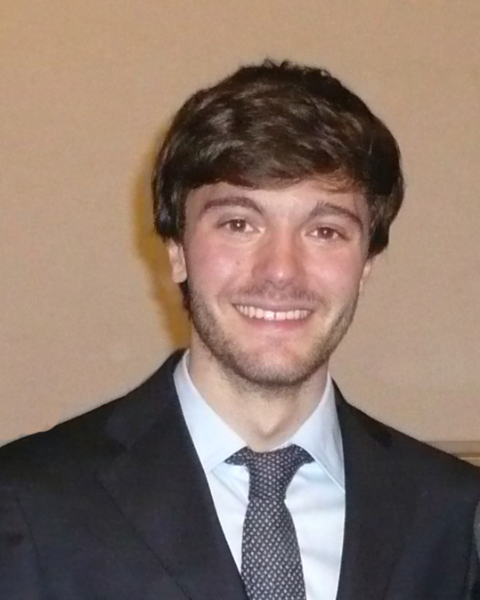Rapid Fire Abstracts
3D Isotropic Free-breathing Whole-Heart T2 mapping and LGE in Acute Myocarditis (RF_TH_207)

Alina Hua, MD, BSc
Clinical Research Fellow
King's College London, United Kingdom
Alina Hua, MD, BSc
Clinical Research Fellow
King's College London, United Kingdom
Camila Munoz, PhD
Research Associate
National Heart and Lung Institute, Imperial College London, United Kingdom- CV
Carlos Velasco, PhD
Research Associate
King´s College London, United Kingdom - RJ
Roman Jakubicek, PhD
Assistant Professor
Brno University of Technology, Czech Republic 
Aurelien Bustin, PhD
Assistant Professor
IHU LIRYC, France
Filippo Bosio, BSc
Deputy Superintendent Radiographer
King's College London, United Kingdom- KK
Karl P. Kunze, PhD
Senior Cardiac MR Scientist
Siemens Healthineers, United Kingdom 
Amedeo Chiribiri, MD PhD FHEA FSCMR
Professor of Cardiovascular Imaging; Consultant Cardiologist
King's College London, United Kingdom
Rene Michael M Botnar, PhD
Director and Professor
Institute for Biological and Medical Engineering
UC Chile, Chile
Claudia Prieto, PhD
Professor and Director for Research and Innovation
School of Engineering, Pontificia Universidad Católica de Chile, Chile
Tevfik F. Ismail, MD, PhD, BSc, FSCMR
Consultant Cardiologist/Reader (Associate Professor)
Guy's and St Thomas' Hospital/King's College London, United Kingdom
Presenting Author(s)
Primary Author(s)
Co-Author(s)
The revised Lake Louise Criteria require one T2-based and one T1-based criterion to make a cardiovascular magnetic resonance (CMR) diagnosis of myocarditis (1). Conventional 2D sequences involve time-consuming breath-holds, produce anisotropic images and are susceptible to partial volume averaging. To reduce scan times, many centers sample a limited number of slices, but this may result in missed diagnoses. We have previously developed high-resolution image-navigator (iNAV) based motion corrected 3D T2 mapping (1.5mm3) (2) and 3D late gadolinium enhancement (LGE) (1.3mm3) (3) sequences to address these limitations. This study aimed to evaluate the readiness for implementation of these sequences clinically by comparing the 3D sequences to conventional 2D methods with regards to acquisition time, image quality and diagnostic performance in acute myocarditis.
Methods:
Patients with clinically suspected myocarditis (n=123, median age= 32; 70 male; peak troponin levels of 375 ng/L) underwent whole heart 2D and 3D T2 mapping and LGE sequences at 1.5T (MAGNETOM Aera, Siemens Healthineers, Forchheim, Germany). Image quality was assessed using a four-point scoring system (2) (score 1= non-diagnostic, 2 = acceptable, 3 =good, and 4 = excellent image quality). To determine the diagnostic performance of 3D sequences, conventional 2D images were regarded as a reference standard. The normal range of 3D T2 mapping sequence was determined in 99 healthy volunteers as 40.8-50.5ms.
Results:
Acute myocarditis (Figure 1) and myocardial infarction were diagnosed in 106 (86%) and 9 (7%) patients respectively. Other diagnoses include exercise-induced troponin leak (2%), pulmonary hypertension (2%), acute pericarditis (2%) and Takotsubo cardiomyopathy (1%). 3D T2 map (6 mins 51s, p< 0.0001) and 3D LGE (5 mins 26s, p< 0.0001) sequences were acquired at a significantly shorter time than the 2D T2 map (7 mins 20s) and 2D LGE (7 mins 45s) .
The breakdown of diagnostic images (scores 2, 3 and 4) for 3D vs 2D images are as follows: 3D T2 images (70 patients [58%] vs 123 patients [100%]), p< 0.0001 and 3D LGE images (112 patients [93%] vs 123 patients [100%]), p=0.0181. For quantitative analysis of the 3D T2 maps, Bland-Altman analysis revealed a small and random T2 bias of 5.5ms, 3.5ms and 3.0ms for the basal, mid and apical segments respectively (Figure 2).
The sensitivity and specificity (95% confidence interval [CI]) of the 3D T2 sequence for diagnosing cardiovascular injury was 86% (74-93%) and 32% (15-54%), PPV of 77% (64-86%) NPV of 46% (23-71%) and estimated AUC (95% CI) of 59% (69-78%). The sensitivity and specificity (95% CI) of the 3D LGE sequence for diagnosing cardiovascular injury was 86% (77-92%) and 82% (66-91%), PPV 92% (83-96%) and NPV 71% (55-83 %), with an estimated AUC (95% CI) of 84% (89%-95%).
Patient-related factors were explored to account for the differences in image quality between 2D and 3D sequences (Figure 3). There was a significant association between the 3D T2 map image quality and heart rate (r2= -0.319, p< 0.001), body mass index (BMI) (r2= -0.264, p< 0.001), and female gender (p< 0.036), where low image quality was observed. The quality of 3D LGE was significantly associated with heart rate only (r2= -0.275, p< 0.001).
Conclusion:
While the 3D LGE sequence proved to be reliable, significant technical hurdles remain for the 3D T2 sequence in females, patients with high BMI, and elevated heart rate. Further work is required to optimise this sequence.

